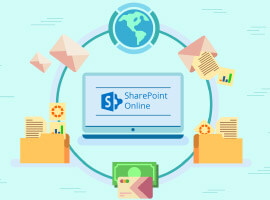As we learned in last Wednesday’s Social Business TweetJam, creating a social business requires a unique combination of people, process and technology. For SharePoint users, the technology is the easy part, but getting the people and process in place can be challenging.
While many enterprise platforms like Microsoft SharePoint are plagued by low user adoption, it needn’t be that way. In an effort to promote better SharePoint adoption, we consulted some of the most experienced and influential SharePoint experts who made our Top 25 Most Influential SharePoint Thought Leaders in Social Business Today.
Community leaders Mark Miller (Fpweb.net), Michael Greth (SharePointCommunity.de), Marisa Peacock (CMSWire), Andrew Connell (Critical Path Training), Lee Bryant (Dachis Group) and Joel Oleson (LDS Church) weighed in on the importance of delivering value and a consumer grade, positive collaboration experience for proven success and greater user adoption.
We also sat down with Andrew Woodward, founder and CEO of 21apps, a UK-based consultancy focused on helping users deliver measurable business value from their SharePoint deployments. Andrew provided some road-tested tips for how to encourage better guidance and build communities focused on supporting business needs. We’ve included his insights alongside the others.
Here is a summary of suggestions from the community:
Add Value
Stop talking about SharePoint. The end user really doesn’t care about SharePoint; they care about seeing a solution that will solve a problem. Community is built around the sharing of ideas and solutions, not around a specific technology. (Mark Miller)
Deliver and show user value. When using SharePoint as a social platform it’s important to help users to understand why they should use it and why they should take on the effort to tag an item, add comments or start contributing content. It’s easy to deploy these tools, but if you want people to really use them you have to sell and show the individual benefits of these social technologies to every single user. (Michael Greth)
Provide a Consumer-Grade Experience
Start with the users and their specific business needs. In order to make sharing a social experience, the process needs to be simple, intuitive and useful. Therefore, design the collaboration solution to enhance people’s workflow, not complicate it. (Marisa Peacock)
Leverage what works well in SharePoint. For example, SharePoint 2010 introduced the notion of managed metadata, a service that provides taxonomy and folksonomy tagging capabilities. Users tag new or existing content or configure libraries to automatically tag content, personalizing the discovery process and making content more findable. (Andrew Connell)
Strike the right balance between user experience (UX) improvements and third party add-ons to improve the platform. Use consumer-grade user experience design to make the platform more usable, and then look to third-party products to fill the main functional gaps, such as social networking and social sharing features. Avoid at all costs building a Frankenstein-like monster created from over customizing the base platform. (Lee Bryant)
Deliver end-to-end solutions – not patches. When it comes to user adoption, client tools like harmon.ie that bridge the gap by bringing SharePoint into people’s work environments can really make a difference. For example, if I’m used to saving files and dragging them into my file share or simply attaching documents to an email and sending it to a public folder for archiving, then I’m going to need the new process to be just as easy to navigate.
To save a document into SharePoint, I’m going to struggle with the long URLs and I’m going to struggle with copying the URL to the email, saving the document locally and then uploading it to the server. If there’s a tool that can make this process 4x to 6x faster, then it’s going to make my life easier. Now I’m listening. Especially if I see that SharePoint ultimately benefits me and not just IT. (Joel Oleson @joeloleson, excerpted from his blog)
Provide Guidance
Andrew Woodward:
Make communication one of the key activities for your SharePoint team. When a new enterprise solution like SharePoint is deployed, it affects everyone. Everyone will be on a journey and it is essential that they are kept informed, know what is happening and know where to go for answers.
Provide the communication in a number of formats, don’t assume everyone goes to the intranet or reads the company emails, get people out into the business doing demonstrations, drop in sessions – make them feel a part of the change.
Be very clear about what works well, what will change and where a SharePoint list might not be the right solution. Promote good practices and be flexible and supportive of the needs for the business, sell the benefits but don’t force change too quickly or people will resist.
The simplest things are often the best. Being experienced with SharePoint and knowing all of the cool things you can do with it can sometimes be a problem. You need to be able to look at the platform from the perspective of a new user. Don’t start with the whizz bang content query web part with custom XSLT roll up thingy; give them something they can relate to immediately.
One that I always find works is the Meeting Workspace – when you demonstrate the simple integration with Outlook, explain how this ensures everyone has access to the latest agenda and meeting notes, how you can review previous meetings and work remotely and you will have a convert who will spread the message in every single meeting they run from that point forward.
Have a single point of contact for all things SharePoint. Set up a SharePoint Center of Excellence team that has a holistic view of all things SharePoint across the organization. The team should not be delivery focused, as in developing code or deploying servers, but should have an awareness of the farm, what solutions have been created, an intimate knowledge of the way the platform is being used and by who.
This team will act as the living governance group, providing good practice guidance to all users, promoting community activities, running the communications campaigns, proving support, running clinics. Most importantly make sure the team has a depth of knowledge and experience from an end user through to a technical architect. This balance of skills experience and knowledge allow the team to work with authority, confidence and autonomy. A SharePoint Center of Excellence is team is essential for lasting cultural change.
Build a Community
Andrew Woodward:
People don’t always ask. Help desks are great for break/fix support but don’t fill the gap when people are trying to do things differently. How many people have the Excel or IT guy in their business area that just seems to know how things work? To really get cultural change after deploying SharePoint you need to support and encourage the development of the SharePoint guy in every area of the business.
Do this in a deliberate way, create and support a community of SharePoint Champions who work day to day in the business but are passionate SharePoint and how it change add value. Support, mentor and train this community – it will be the way your SharePoint Center of Excellence can scale and reach every area of the business.
Editor’s Note: You may also be interested in reading:
• Social Business 101: Framing Your Strategy by @robhoward
• Getting Started with Social Business: Building the Culture by @hyounpark_AG
• What Matters in Social Business? by @peterkim
About the Author
David Lavenda is VP Marketing and Product Strategy at harmon.ie. He is a technology expert blogger for Fast Company. He is also pursuing advanced studies in STS (Science, Technology and Society) – focusing on the research of online behaviors. He can be reached at Twitter @dlavenda.

David Lavenda
This article was originally posted on CMSWire.
Stay tuned for more SharePoint content by joining our community or by following us on twitter or facebook











